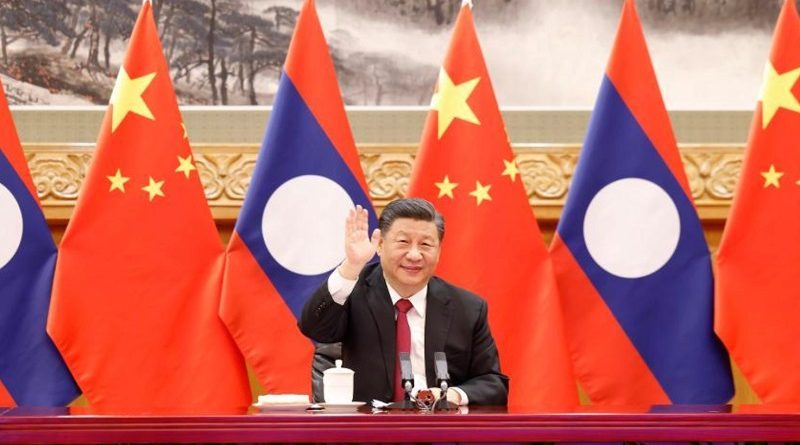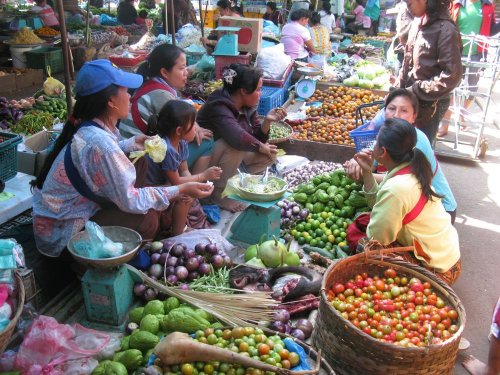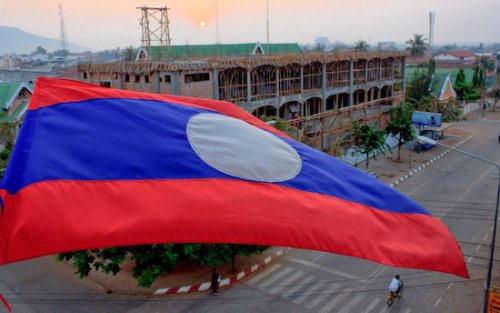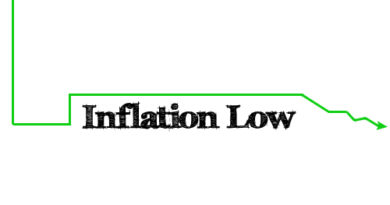Why China Can’t Let Laos Default
Source: Asia Times
Laos faces intensifying economic and financial crises and there is likely no way out without some form of a Chinese bailout or debt forgiveness.
Various warning signs are blinking red in the small Southeast Asian country. The national currency, the kip, has lost around a third of its value against the US dollar compared to this time last year. Inflation hit 23% in June, its highest level in decades. Meanwhile, much of the landlocked country faces fuel shortages.
The communist-run government has huffed and bluffed but finally undertook a cabinet reshuffle in late June, bringing in a new commerce minister and central bank governor. Some emergency measures have stemmed certain economic problems from worsening.
But those haven’t alleviated the nation’s underlying financial woes, which are now more precarious than ever. “The chances that Laos will default on its debt obligations are extremely high,” says Carl Thayer, an emeritus professor at the University of New South Wales in Australia.
Indeed, the country’s foreign debts have swelled to over US$14 billion, or 88% of gross domestic product (GDP). Around half that amount is owed to China, including the Lao state’s one-third stake in the $5.9 billion China-Laos railway, a megaproject that opened in December amid concerns about the line’s commercial viability.
Vientiane barely scraped through making its annual debt repayments last year. Now it must pay $1.3 billion each year until 2025 in debt servicing, according to the World Bank, which reckons the Lao state had only that amount in foreign reserves earlier this year. It’s also equivalent to nearly half of total domestic revenue collected each year.
Minister of Finance Bounchom Ubonpaseuth said last month that the nation’s debt-service payment will be around $1.4 billion this year.
Prime Minister Phankham Viphavanh has said that austerity, increased revenue collection and a crackdown on graft will ease economic and financial stress. Those, however, have been promised by each of his predecessors, only for the situation to worsen. And changes may come too slow to help with repayments this year.

Markets are concerned about a potential default. Fitch Ratings, a credit-rating agency, downgraded Laos to its “CCC” rating last August. Last month, Moody’s gave it a “Caa3” rating, or junk status, warning of “a very high debt burden and insufficient coverage of external debt maturities by (foreign exchange) reserves.”
Apparatchiks in Vientiane have reason to expect a bailout. Their principal creditor is China, a key ally, and Beijing would surely suffer geopolitically if it allows Laos to default so soon after finishing the $5.9 billion railway, a key spur on China’s Belt and Road Initiative (BRI) vision for Southeast Asia.
“No doubt Laos faces economic and financial difficulties that are tremendous and worryingly severe, but I don’t think China will let Laos default,” says Toshiro Nishizawa, a professor at the University of Tokyo’s Graduate School of Public Policy and a member of a fiscal policy team that advised the Lao government between 2018 and 2020.
“The size of debt obligations alone appears to suggest that default is inevitable, but geo-economic factors make such simple predictions unrealistic in favor of Laos,” Nishizawa added.
The amount of Laos’ exact debt to China is debatable. The World Bank reckons it’s almost half of the country’s official debt of $14.5 billion, which would put it around $7.2 billion. However, AidData, a research lab at William & Mary’s Global Research Institute, puts it at almost US$12.2 billion, a figure that includes several publicly undisclosed deals.
Whatever the true figure, Laos’ debt is trifling for Beijing. The Harvard Business Review estimated in 2020 that the “Chinese state and its subsidiaries have lent about US$1.5 trillion in direct loans and trade credits to more than 150 countries around the globe.”
The World Bank reported in January that of the $35 billion the world’s 74 lowest-income nations owe in debt service payments this year, almost US$13.1 billion is owed to Chinese entities. (Laos likely owes China around $700 million in repayments annually.)
“It seems unlikely that China would let Laos default, even though Beijing has throughout the pandemic been reluctant to offer relief for its developing world debtors,” says Charles Dunst, an associate at The Asia Group and a fellow at the Center for Strategic and International Studies, a Washington DC-based think tank.
Some of those debtors, however, are not in Asia, let alone in “China’s backyard”, Dunst noted. Beijing dallied in helping Pakistan out of its recent financial dilemmas but came through by rolling over a US$4.5 billion repayment due in March. It did less to help Sri Lanka and ignored its appeals as Colombo defaulted on its debt.
A Lao debt default would “further dent views of China as a partner in the developing world, but specifically in Southeast Asia,” said Dunst.

For years, critics of China’s global expansion and its infrastructure-led foreign policy have warned that poorer nations like Laos risk falling into Chinese “debt traps.”
“The ‘debt trap’ discourse is often politicized and, accordingly, it is viewed differently by different actors across the geopolitical spectrum,” noted Kearrin Sims, a senior lecturer at the James Cook University in Australia.
According to some critics, Beijing ensnares poor countries with grand offers of lightning-speed infrastructure development, only to take possession of key national assets when those states cannot repay their loans. A Chinese entity’s possession of the Hambantota Port in Sri Lanka is the classic example provided.
That conspiracy-minded interpretation is contested by others, though. It is too simplistic to say, “Laos will be a victim of China’s debt-trap diplomacy,” argued Nishizawa.
“A ‘debt trap’ for Laos means a ‘debt trap’ for China as the lender,” he noted, adding that it’s two sides of the same coin. If a Chinese entity takes possession of an important Lao asset in lieu of debt repayment, it also incurs the non-performing parts of the asset.

We are Your Marketing Partners in Laos
When the state-owned company China Southern Power Grid took a controlling stake in Laos’ national power grid last year, it also took on some of the debt responsibilities of its local partner, the state-owned Electricite du Laos, which had around $5 billion in outstanding debts.
“If Laos were to default it would offer a strong cautionary tale to other low and middle-income countries wanting to rapidly modernize on the back of Chinese lending and investment,” said Sims.
Given the centrality of Laos in China’s BRI and the fanfare that has surrounded the Boten-Vientiane high-speed railway, “any spotlight on Laos’ debt must also shine somewhat on China,” Sims added.
Chinese officials have been mostly silent over Laos’ debt woes. Its embassy in Vientiane didn’t respond to Asia Times’ requests for comment.
In December, the state-run Chinese tabloid Global Times claimed that concerns over Laos’ debt-laden infrastructure plans were “the sour-grapes mentality of the US-led Western world, unwilling to see any beneficial cooperation between China and others, and they know clearly that they have lost advantages in pursuing such kinds of collaboration.”
A few weeks ago, the Global Times argued that Laos’ debt crisis is the result of Washington’s recklessly hiking interest rates this year. A soaring dollar has weakened other currencies, including the Lao kip, yet the country’s debt crisis has been brewing for years.
The Lao government has also been rather mute about the impending crisis. The topic was reportedly not discussed at all during Prime Minister Phankham’s visit last month to Thailand, a key trading partner and creditor.

Laos could turn to the International Monetary Fund (IMF) to restructure the debt that it doesn’t owe to China, thereby not affecting its debt relationship with Beijing. To secure an IMF bailout, though, “Laos would almost certainly come under pressure to curb corruption, increase domestic revenues and reduce government spending,” said Thayer.
The communist Lao People’s Revolutionary Party (LPRP), which has ruled the one-party state since 1975, has paid lip service to all three of these in recent years.
Yet it has so far avoided going to its international lenders for debt renegotiations. During the Covid-19 pandemic, it chose to take on new loans from Beijing rather than seek credit through multilateral lenders.
Alternatively, in lieu of some repayment, the Lao state could concede a larger stake or more control in infrastructure projects to Chinese investors. In the past, Laos has also been known to concede state-owned land to Chinese entities in exchange for debt repayments.
Another option would be to renegotiate the repayment schedule under Chinese terms. This would likely see repayment timeframes lengthened but interest rates increased.
Analysts reckon these are already happening. “Debt service deferrals seem to have been granted by China as bilateral deals, although not officially announced,” said Nishizawa.
Currency swap arrangements between the Bank of Lao and the People’s Bank of China (PBC), the two counties’ central banks, “might have helped save scarce foreign exchange reserves to allow debt service payments,” Nishizawa added.
Last year, the PBC extended a $300 million loan to Laos’ central bank to support its foreign exchange reserves. But Laos’ financial problems are becoming more urgent as end-of-year debt servicing payments come due. And while a Lao default would be self-inflicted, it would also give new momentum to the China “debt trap” narrative.





